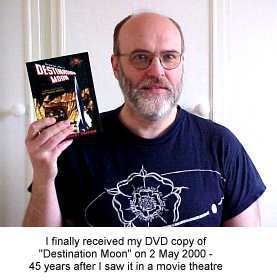NASA - Administrator's Symposium Examines Exploration and Risk: "Glenn Mahone/Bob Jacobs
Headquarters, Washington
(Phone: 202/358-1898/1600)
Ann Sullivan
Ames Research Center, Moffett Field, Calif.
(Phone: 650/604-3039)
Sept. 22, 2004
CONTRACT RELEASE : N04-151
Administrator's Symposium Examines Exploration and Risk
Have you ever been into space, in a research submarine, or been a part of a remote polar research base? Whether it's exploring the depths of our oceans or reaching the top of our highest mountains, great feats often involve great risk.
During a special symposium hosted by Administrator Sean O'Keefe, NASA examines the similarities between space exploration and other terrestrial expeditions with the help of some of the best known explorers in the world, including mountain climbers, deep sea explorers, scientists and science fiction writers. The discussions also will include NASA astronauts, other notable aeronautics and deep space explorers.
The symposium, 'Risk and Exploration: Earth, Sea and the Stars,' will be carried live Sept. 27-28 on NASA TV and webcast on http://www.nasa.gov from the Naval Postgraduate School in Monterey, Calif.
Sessions and participants:
Monday, Sept. 27 -5:30 p.m. EDT
Session One – Earth Moderator: Chris McKay, Planetary Scientist, NASA's Ames Research Center (ARC), Calif.
Ed Viesturs, American High-altitude Mountaineer
Penny Boston, Director of Cave and Karst Studies, New Mexico Institute of Mining and Technology
Dale Andersen, Astrobiologist, Antarctic/Arctic researcher, SETI Institute
Nathalie Cabrol, Planetary Geologist, ARC, SETI Institute
Bill Stone, President, Stone Aerospace
David Roberts, Writer specializing in mountain climbing, adventure, and archaeology
Tuesday, Sept. 28 – 12 p.m. and 5 p.m. EDT
Session Two – Sea
Moderator: David Halpern, Senior Policy Analyst, White House Office of Science and Technology Policy
John Chatterton, Professional Diver, featured in the book, Shadow Divers
Sylvia Earle, Founder and Chairman, Deep Ocean Exploration and Research
Jean Michel Cousteau, President, Ocean Futures Society
Mike Gernhardt, NASA astronaut
James Cameron, Academy Award winning director, undersea explorer
Laurence Bergreen, author, Over the Edge of the World: Magellan's Terrifying Circumnavigation of the Globe
Session Three – The Stars
Moderator: John Grunsfeld, NASA Chief Scientist and astronaut
Harrison Schmitt, former NASA astronaut
Shannon Lucid, NASA astronaut
Steve Squyres, Professor of Astronomy at Cornell University, Scientific Principal Investigator for the Mars Exploration Rover mission
Jim Garvin, NASA Chief Scientist for Mars and the moon
John Mather, James Webb Space Telescope Senior Project Scientist, NASA's Goddard Space Flight Center
Graham Yost, Writer/Director, From the Earth to the Moon
Times and participants are subject to change. See the NASA TV schedule on the Internet for the latest updates.
NASA TV is available in the continental United States on AMC-6, at 72 degrees west longitude, Transponder 9, 3880 MHz, vertical polarization, audio at 6.8 MHz. If you live in Alaska or Hawaii, NASA TV is on AMC-7, at 137 degrees west longitude, Transponder 18, at 4060 MHz, vertical polarization, and audio at 6.8 MHz.
For more information about NASA TV or to watch the events on the Internet, visit:
http://www.nasa.gov/multimedia/nasatv/index.html













